Ancient types of wheat, like kamut, are put to the test for inflammation, blood sugar, and cholesterol control.
The number one killer in the United States and around the world is what we eat. As you can see in the graph below and at 0:15 in my video Friday Favorites: Are Ancient Grains Healthier?, our diet kills millions more than tobacco. What are the five most important things we can do to improve our diets, based on the single most comprehensive global study of the health impact of nutrition? Eat less salt, eat more nuts, eat more non-starchy vegetables, eat more fruit, and, finally, eat more whole grains.  Any particular type of whole grains? What about so-called ancient grains? Are they any better than modern varieties? For instance, what about kamut, described as “mummy wheat” and supposedly unearthed from an Egyptian tomb?
Any particular type of whole grains? What about so-called ancient grains? Are they any better than modern varieties? For instance, what about kamut, described as “mummy wheat” and supposedly unearthed from an Egyptian tomb?
After WWII, the wheat industry selected particularly high-yielding varieties for pasta and bread. Over the past few years, though, some of the more ancient grains—“defined as those species that have remained unchanged over the last hundred years” despite agricultural revolutions—have been reintroduced to the market.
As you can see below and at 1:13 in my video, nutritionally, kamut and einkorn wheat, which is the oldest wheat, have more eyesight-improving yellow carotenoid pigments, such as lutein and zeaxanthin, compared to modern bread and pastry wheat, because the pigments have been bred out of the bread intentionally. People want their white bread white, but modern pasta flour (durum wheat) maintains much of that yellow nutritional hue.
 As you can see in the graph below and at 1:41 in my video, modern wheat may have less lutein, but it tends to have more vitamin E, as seen in the graph below and at 1:45. Based on straight vitamin and mineral concentrations, it’s pretty much a wash. Both modern and primitive kinds of wheat have a lot of each, but primitive wheats do have more antioxidant capacity, likely due to their greater polyphenol content, as you can see in the graph below and at 2:00 in my video. To know if that makes any difference, though, we have to put it to the test.
As you can see in the graph below and at 1:41 in my video, modern wheat may have less lutein, but it tends to have more vitamin E, as seen in the graph below and at 1:45. Based on straight vitamin and mineral concentrations, it’s pretty much a wash. Both modern and primitive kinds of wheat have a lot of each, but primitive wheats do have more antioxidant capacity, likely due to their greater polyphenol content, as you can see in the graph below and at 2:00 in my video. To know if that makes any difference, though, we have to put it to the test.


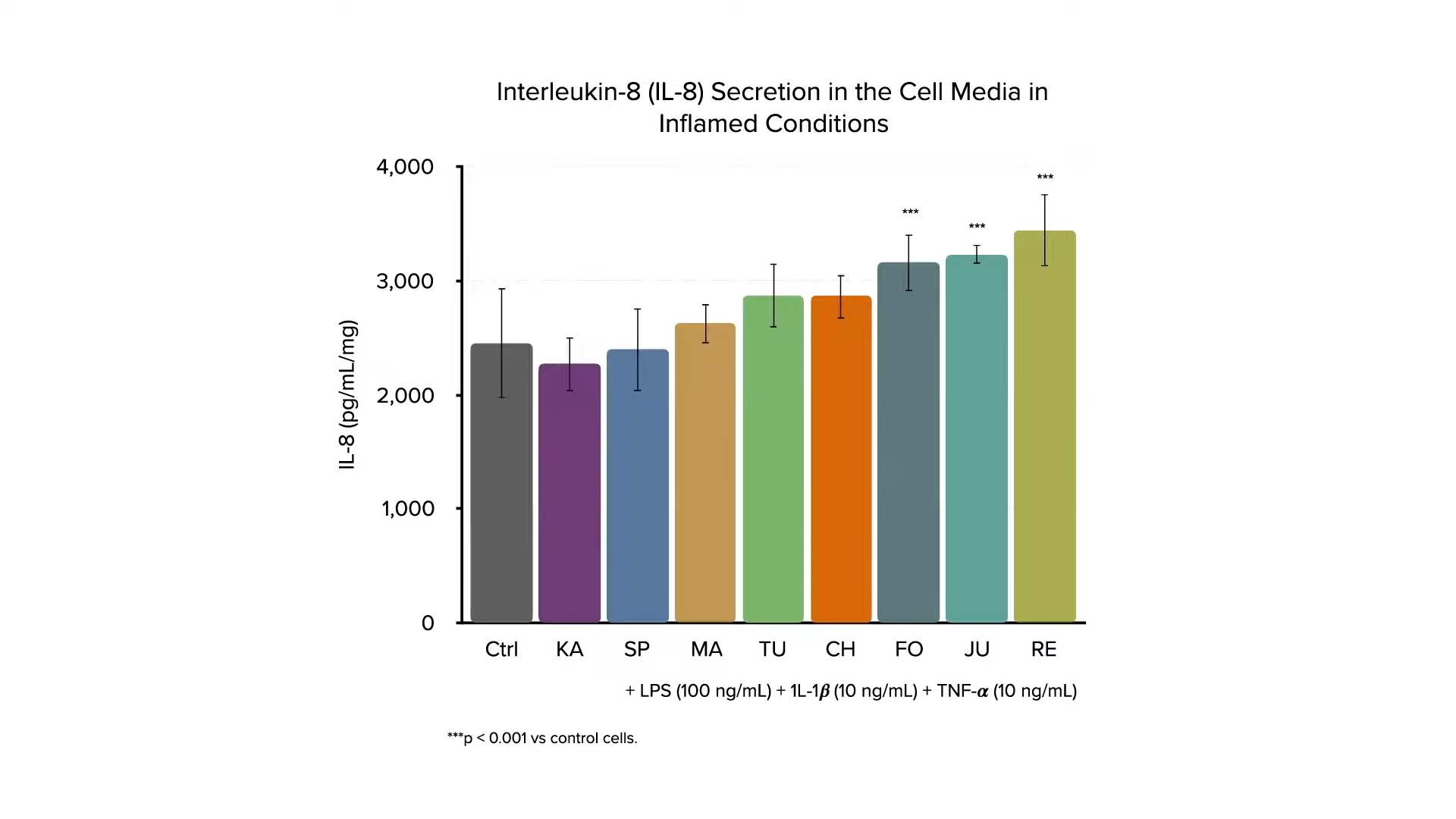
If you expose human liver cells to digested bread made out of ancient grains (kamut and spelt), heritage kinds of wheat, or modern strains, then expose the cells to an inflammatory stimulus, the modern wheat strains seem less able to suppress the inflammation, as you can see in the graphs below and at 2:09 in my video. The investigators conclude that even though these different grains seem to be very similar nutritionally, they appear to exert different effects on human cells, “confirming the potential health benefits of ancient grains.” 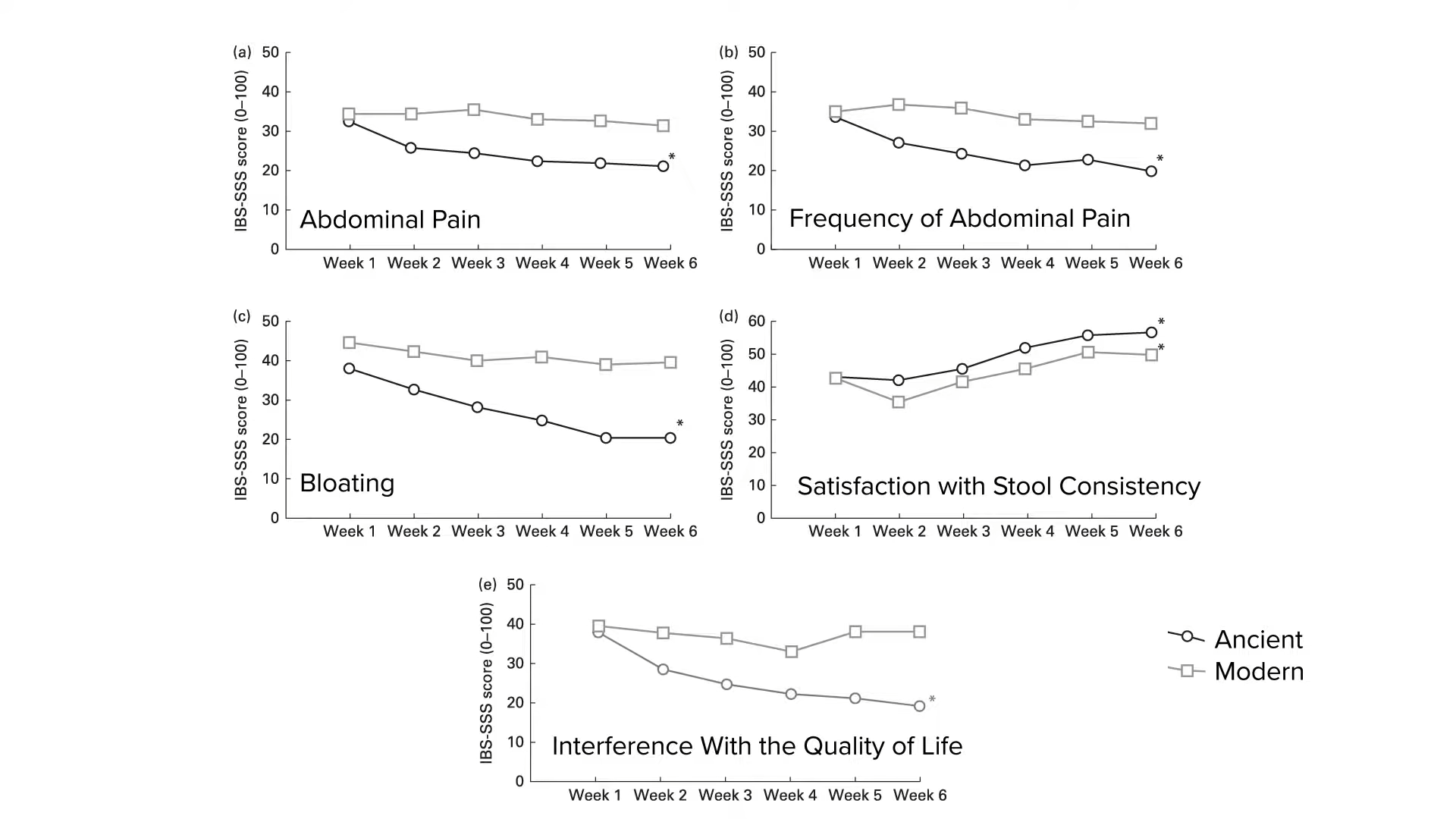 That was in a petri dish, though. What about people? If ancient kinds of wheat are better at suppressing inflammation, what if you took people with irritable bowel syndrome (IBS) and randomized them to receive six weeks of wheat products made out of modern wheat or ancient wheat—in this case, kamut? Same amount of wheat, just different types. If there is no difference between the wheats, there’d be no difference in people’s symptoms, right? But, when study participants in the control group were switched to the ancient wheat kamut, they experienced less abdominal pain, less frequent pain, less bloating, more satisfaction with stool consistency, and less interference with their quality of life, compared to the modern wheat. So, after switching to the ancient wheat, they had “a significant global improvement in the extent and severity of symptoms related to IBS…”
That was in a petri dish, though. What about people? If ancient kinds of wheat are better at suppressing inflammation, what if you took people with irritable bowel syndrome (IBS) and randomized them to receive six weeks of wheat products made out of modern wheat or ancient wheat—in this case, kamut? Same amount of wheat, just different types. If there is no difference between the wheats, there’d be no difference in people’s symptoms, right? But, when study participants in the control group were switched to the ancient wheat kamut, they experienced less abdominal pain, less frequent pain, less bloating, more satisfaction with stool consistency, and less interference with their quality of life, compared to the modern wheat. So, after switching to the ancient wheat, they had “a significant global improvement in the extent and severity of symptoms related to IBS…”
What about liver inflammation? The liver function of those with nonalcoholic fatty liver disease randomized to eat kamut improved, compared to those eating the same amount of regular wheat, suggesting kamut is superior, as you can see below and at 3:47 in my video.

People with diabetes, had better cholesterol and better insulin sensitivity on the same ancient grain, as shown below and at 3:57.
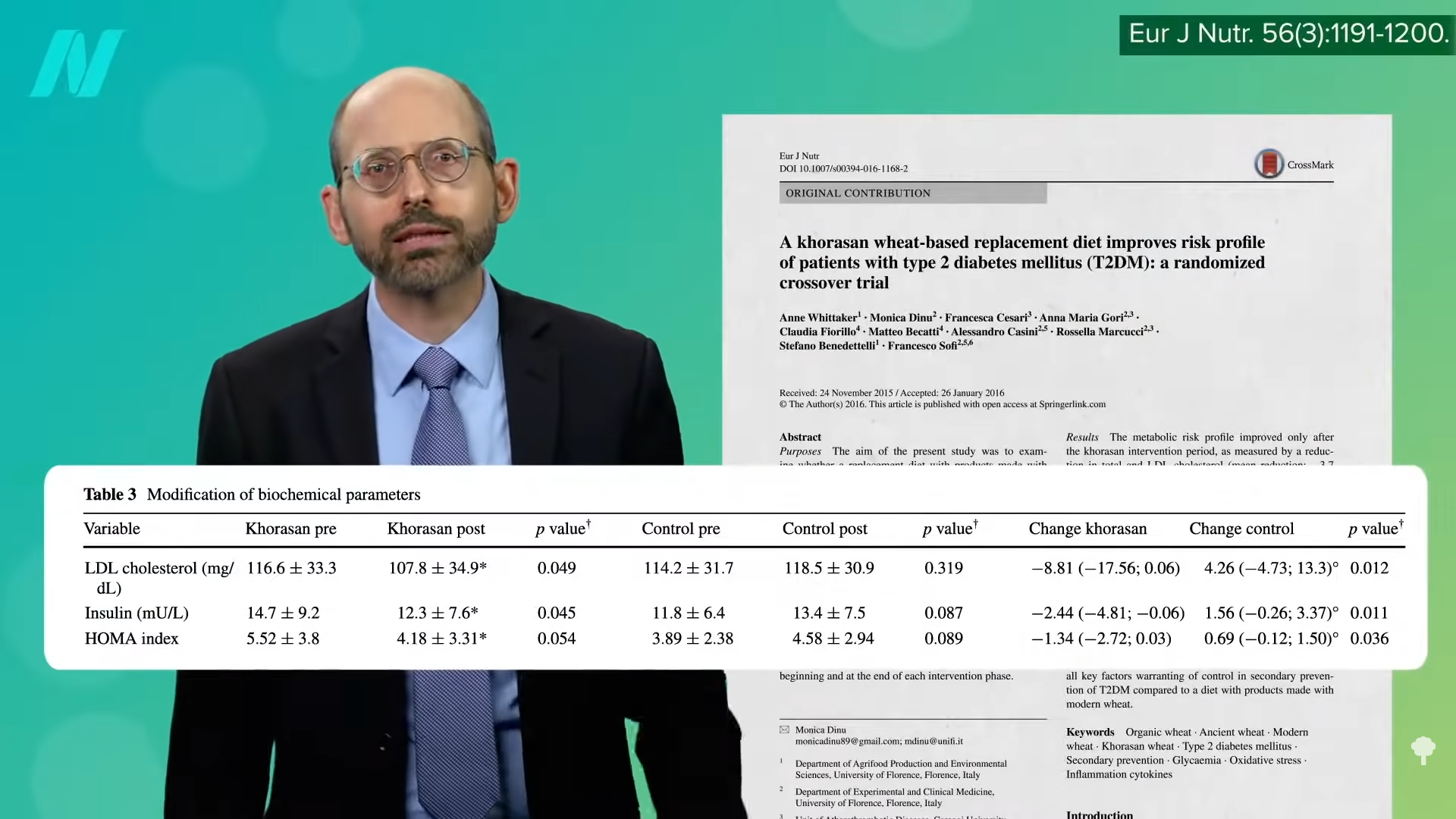
And those with heart disease? They had better blood sugar control and better cholesterol, as shown below and at 4:03.
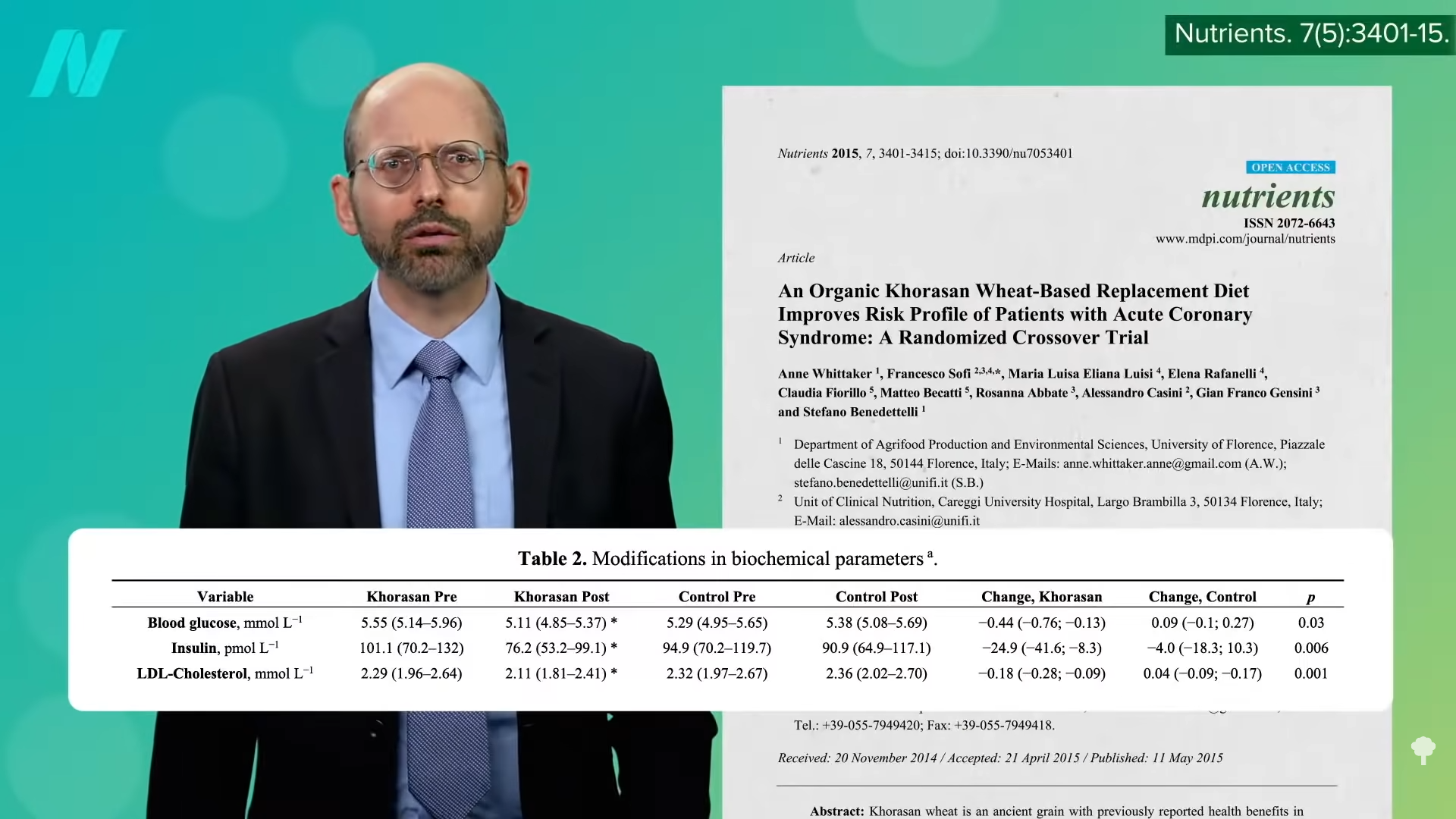
And, people without overt heart disease had better artery function, as you can see below and at 4:06 in my video.
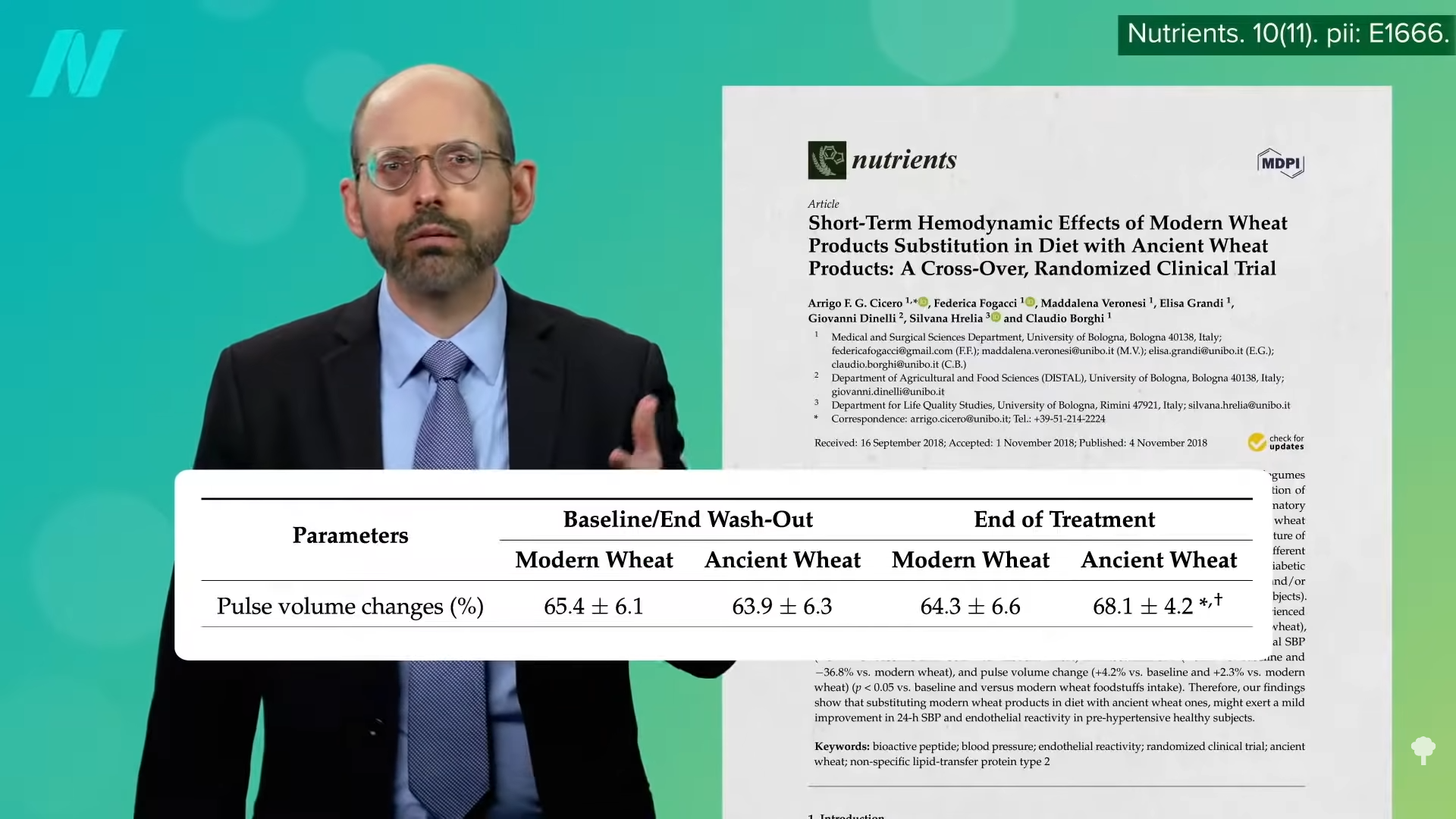
The bottom line is that findings derived from human studies suggest that ancient wheat products are more anti-inflammatory and may improve things like blood sugar control and cholesterol. “Given that the overall number of human interventional trials conducted to date are numerically insufficient, it is not possible to definitively conclude that ancient wheat varieties are superior to all commercial, modern wheat counterparts in reducing chronic disease risk.” However, the best available data do suggest they’re better for us.
Regardless of what type of wheat you may eat, a word to the wise: Don’t eat the plastic bread-bag clip. A 45-year-old man presented with bloody stools, and his CT scan showed the offending piece of plastic from his bag of bread, as you can see below and at 4:53 in my video. When the patient was questioned, he “admitted to habitually eating quickly without chewing properly.”
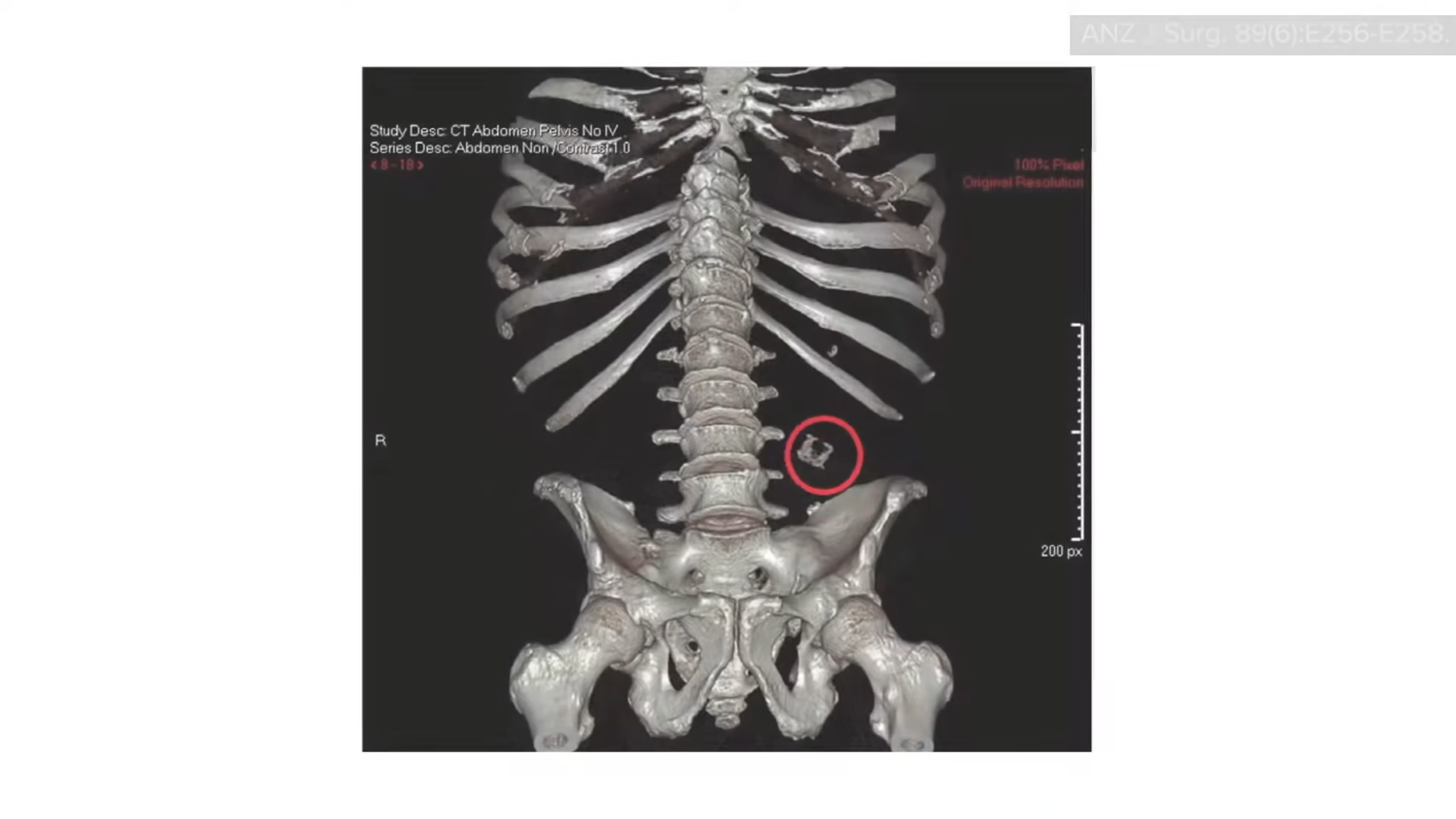
Whole grains—ideally intact ones and ancient and modern varieties alike—are an integral part of my Daily Dozen checklist, the healthiest of healthy things I encourage everyone to try to fit into their daily routines.
Whole grains are especially good for our microbiome. Learn more in the related posts below. What about gluten? Also, see the related posts below.


Recent Comments